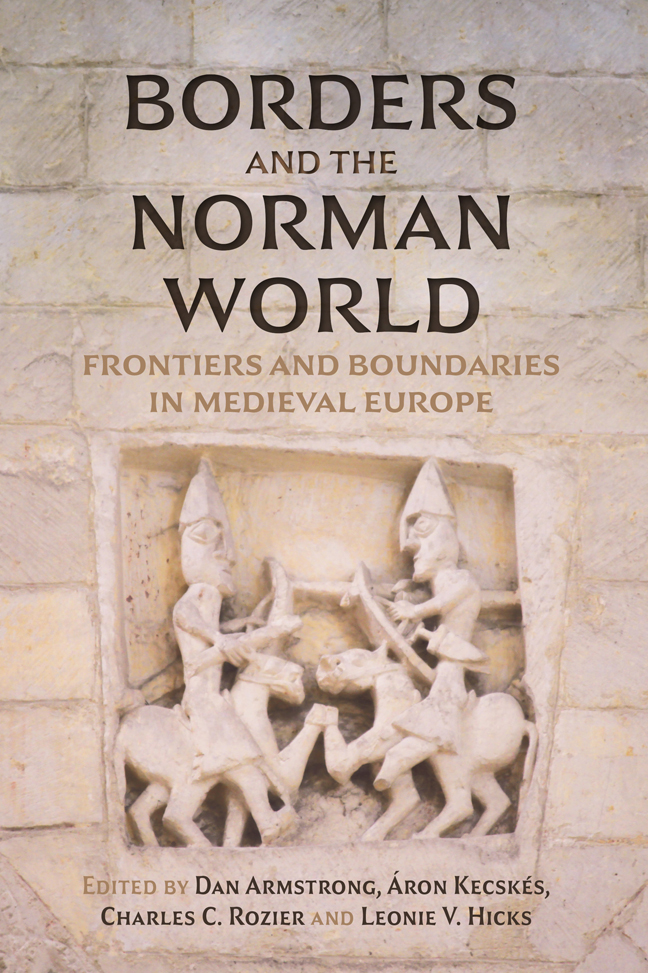Book contents
- Frontmatter
- Contents
- List of Illustrations
- List of Contributors
- Acknowledgements
- List of Abbreviations
- Naming Conventions
- Maps
- Introduction: Writing the Borders of the Norman World
- Part I Borders in and Around the Norman World
- Part II Ecclesiastical Borders
- Part III Conceptual Boundaries
- Afterword: Borders, Landscapes, and Seascapes
- Select Bibliography
- Index
3 - Controlling an Unstable Boundary: The Normans and their Continental Border Areas, 911–1135
Published online by Cambridge University Press: 22 February 2024
- Frontmatter
- Contents
- List of Illustrations
- List of Contributors
- Acknowledgements
- List of Abbreviations
- Naming Conventions
- Maps
- Introduction: Writing the Borders of the Norman World
- Part I Borders in and Around the Norman World
- Part II Ecclesiastical Borders
- Part III Conceptual Boundaries
- Afterword: Borders, Landscapes, and Seascapes
- Select Bibliography
- Index
Summary
The Creation Of The borders of Normandy is naturally linked to the emergence of the new duchy, with these borders being rather fluid during the first two hundred years of the duchy's existence. Although diocesan boundaries played a central role in shaping the limits of Normandy, the duchy's borders did not follow them entirely. The newly established borders of Normandy were soon straddled by networks of transborder families and cross-border allegiances, complicating the custody of the duchy's borders. The defence of the frontier, which included a belt of border-castles, composed of a hierarchical network of ducal and seigneurial fortresses, was a constant concern for the dukes. This frontier belt and its fortresses underwent considerable architectural developments in reaction to socio-political changes; this process is examined in detail below. In particular, the question of control was central to both the creation of a solid frontier and the solidification of ducal power. Different solutions were implemented in turn: sovereign delegation to ducal kinsmen, patrimonial grants to settle defensive lordships, and fortified ducal towns ruled by no feudal intermediary. Encastellation of the borders was gradual, fluctuating with the expansion and retraction of Norman territory. Ultimately, the frontiers of Normandy stabilised by the reign of King Henry I as a result of the declining expansion of the Norman territory.
The Construction of a Norman Space and the Realm's Frontier
It is worth outlining the meaning given here to the concepts ‘frontier’ and ‘border’. As Mark Hagger has argued elsewhere in this volume, it is perhaps helpful to define a border as a linear boundary and a frontier as a zone, that was fully crossable and permeable to external influences. The idea of buffer-zones is present early in our sources: it is significant that frontiers were not only called fines or confinium but also Marchia. For instance, the French Abbot Suger mentioned ‘Normannie Marchia(m)’ or ‘Normannorum Marchia’, while the lordship of Gournay is described as ‘ad marchiam’ in 1172. When King Henry died in 1135, the Gesta Normannorum ducum referred to the fortresses he had built ‘in margine suis ducatus et confinium prouinciarum’.
Evolving Boundaries
By the time of the death of King Henry I, the Norman duchy was much larger than what had been originally granted to Rollo.
- Type
- Chapter
- Information
- Borders and the Norman WorldFrontiers and Boundaries in Medieval Europe, pp. 69 - 98Publisher: Boydell & BrewerPrint publication year: 2023

